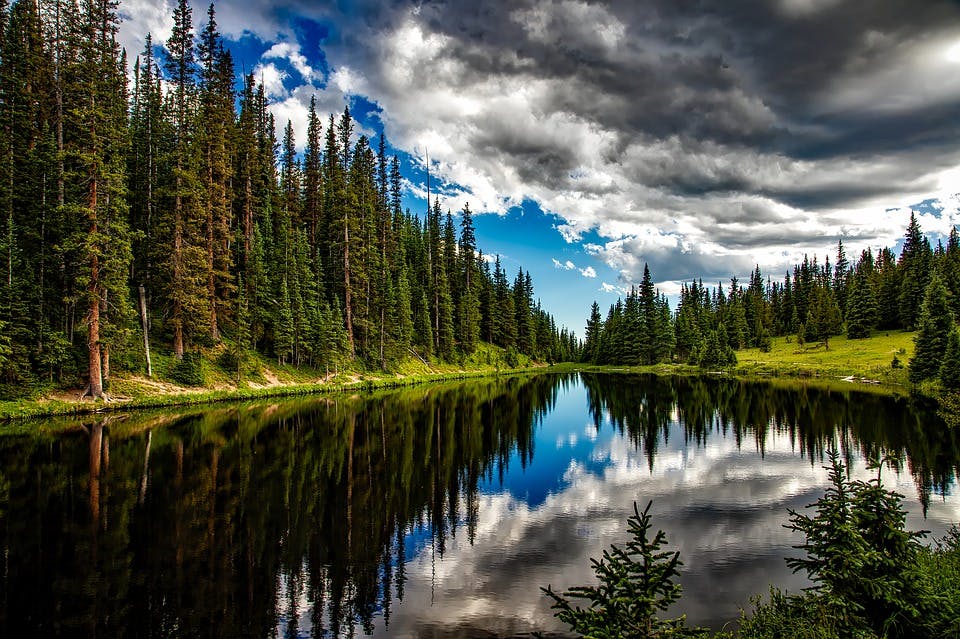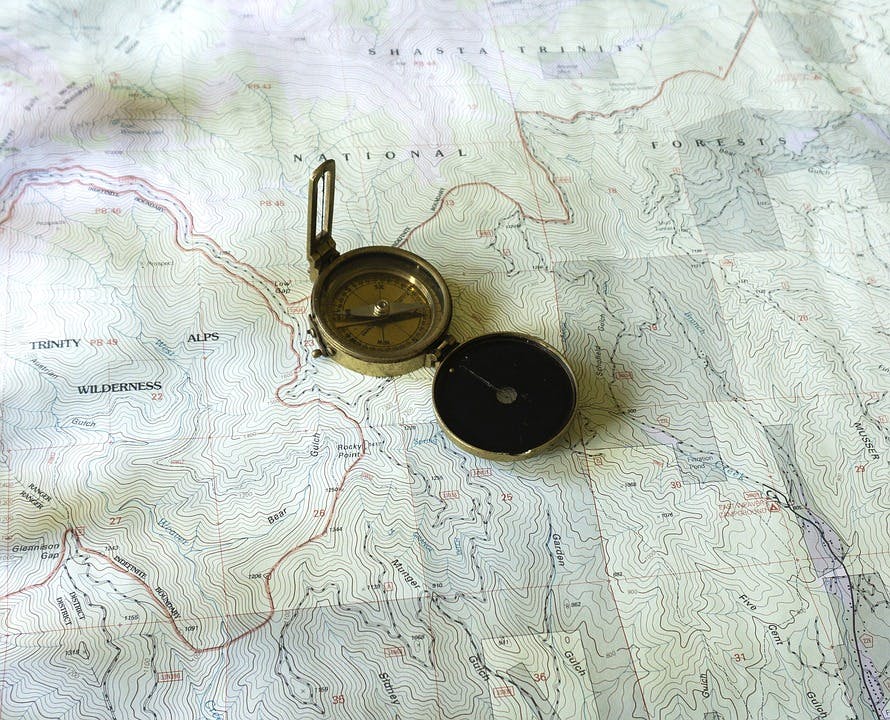Playing in the Wilds: How to Minimize Your Impact
Before we dive into ways to play in some of our nation’s expansive wildernesses, we figured it would be best to explore ways that you can minimize your impact while enjoying the outdoors. We won’t go into the lifestyle choices that we all make which have an impact on our world, but will instead zoom in on the practices that are necessary to leave our natural areas healthy and whole for the next generation of adventurers.

Some of you may have heard of Leave No Trace, the Center for Outdoor Ethics. If you haven’t, we encourage you to stop by their website, which offers a plethora of information and tips to safely and responsibly enjoy ecosystems around the world. You can find it here: www.lnt.org. Doing a quick search online for minimal-impact camping or outdoor ethics will undoubtedly reveal thousands of websites, articles, and infographics explaining how to enjoy nature without destroying it. Many of them are sponsored by organizations like Leave No Trace and are dedicated to educating explorers
To save you a bit of time and because we believe in the importance of this practice, we would like to outline some of those guidelines and discuss ways to implement them during your next adventure.
Plan
This is perhaps the most important step in practicing ethical outdoor exploration. It goes far beyond making a check list of camping gear, although that is certainly part of it. The best way to have minimal impact on the environment is to plan to do so from the very start. How do you do it? Well, every trip is different so our list is by no means exhaustive, but we’ll give you an idea of what kinds of questions you need to be asking and some possible answers that may work for you.
First, make a list of the basics. Where are you going? How long will you be there? When will you go? How many others will be with you? What do you plan to do while there? Keeping the basic information in mind will help you to make decisions later on in the planning process. At this point, it’s also a good idea to gather your navigation materials – topographic maps of the area, trail maps, GPS units, etc. Be sure that they are up-to-date and leave copies of your destination and planned route with someone. Don’t have anyone nearby to act as your safety net? You can leave your route plan with the area forest rangers or campground managers. Just be sure that someone knows where you’re going and how long you plan to be gone.

Second, research the area. This involves more than just punching an address into your GPS or making a reservation at a campground. Most wilderness areas have rules and regulations for use including things like permits for back-country camping, burn bans, special regulations for hunting or fishing, and even things like invasive species notifications or danger alerts. Keep in mind that most of these regulations came about to stop previous abuse, so please take them seriously and follow any of their requirements. An example of this happened earlier this year in California when a “super bloom” of flowers drew in crowds by the thousands who then trampled the flowers in their attempts to get photographs. After seeing 100,000 visitors in a single day, the nearby town was forced to close to all visitors. Though the town reopened later, this shows an extreme example of how regulations aren’t just created on a whim but are an attempt to stop cases of abuse and damage.
Third, consider the logistics of day to day living during your trip. What will you eat? How will you cook it? How will you carry out your garbage? If you are planning to camp, how much space will you need for your tent(s)? How will you clean your gear/dishes? And what will you do with your … ahem, leavings? Not exactly a pleasant thought, but many areas don’t offer toilets and you should always pack out things like toilet paper and other sanitary products.
Choose Your Path Wisely
This applies to the paths taken while hiking as well as the place you choose as your campsite. There are two basic categories of environments that you may have to hike/camp in: pristine or well-traveled. No matter which you find yourself in, always try to avoid water ecosystems which are fragile and attract wildlife. First, let’s take a look at well-traveled.
Well-traveled areas often have designated trails or campsites and are frequented by many throughout the year. They often have peak seasons when said trails can become extremely crowded, so it’s usually best to plan your visit during the off-season if possible. While hiking in these areas, always travel single-file down the established trail. Walking side-by-side encourages erosion and will damage the surrounding areas. Never cut corners on switchbacks, as this also damages the surrounding area. While camping in these areas, always use established campsites to minimize your impact and be considerate of other neighboring campers. Cluster tents close together to lower your camping footprint. If there are no designated sites, find an area with a durable surface like gravel, dry grass, rock, pine needles, or even snow.

Pristine areas require a bit different approach when it comes to hiking and camping. While hiking through these areas, pay attention to the terrain and vegetation in the area as this will determine how to proceed. Hike on durable surfaces whenever possible and keep to a single file while on them. If the surface runs out and you find yourself facing a stretch of softer, more vulnerable surface, spread out. Though it increases the surface area of impact, it reduces the level of damage by eliminating repeated trampling on the same path. The exception to this is when you approach extremely fragile environments like cryptogamic sand (hard crusted sand found in the desert that prevents wind erosion). In these environments, it is best to walk single file to reduce the area affected by your group.
While camping in pristine areas, you want to look for a durable surface that is out of view of others (so you don’t encourage others to camp in the same spot). Spread your tents out to disguise the impact you have on the area (again, so you don’t encourage others to camp there). When traveling around camp, try not to use the same path twice to avoid creating trampled paths through the environment and wear soft-soled shoes. When you are finished, any debris that was cleared to make room for your tents (pine cones, branches, small rocks) should be scattered back in place.
Pack In, Pack Out
This is a simple concept, and yet it is one that many don’t follow. Whatever you bring with you on your adventure must leave with you when you’re done. Bring along an extra bag or two to collect garbage. If your pack is light and you have the room, consider collecting other garbage you find along the way as litter will attract more litter. To reduce the amount of garbage you bring in, utilize planning techniques before your trip to trim the waste. Remove food from excess packaging, prepare meals in advance, and only bring enough food necessary to sustain each camper to cut back on left-overs. And for your, ahem, human waste? Bring a small trowel with you and dig a 6 to 8 inch deep hole to bury it. Just make sure to do so at least 200 feet from any water, trails, or campsites. Pro Tip: save coffee bags for camping trips! They are great for storing all sanitary waste products. The strong coffee smell helps to disguise any unpleasant aromas, the sturdy and resealable bag means no leaks, and they are solid so no one has to see what’s inside. Just be sure to clearly label the outside of the bag as waste and dispose of it properly once you are home.

Be Considerate
This applies to other outdoor enthusiasts as well as the wildlife. Take pictures rather than mementos so that others may enjoy the same view in the future. Give wildlife the proper respect by avoiding game trails, water sources, and nesting areas and giving any visible wildlife plenty of space. Never feed wildlife or leave food or garbage for them to find. Leave your pet at home – they can disturb both wildlife and other hikers/campers. Clean your campsite, including any campfire rings, for the next camper. Take breaks off the trail in a durable area to allow others to pass. Keep noise levels to a minimum and remember that in many environments, sound can travel far. Consider wearing natural-colored clothing (except during certain hunting seasons) to keep from distracting other hikers who may be enjoying the vista where you are passing through.
Here at Fun Unlimited, we’re all about having fun, but we want to do our part to make sure that the fun doesn’t stop with us. If you follow these basic guidelines and do your part to practice minimal-impact hiking and camping, you’ll help to ensure that the fun continues for generations. Together, we can give all of our great grandchildren a chance to be awed by the same stunning landscapes that we fell in love with while playing in the wilds.
